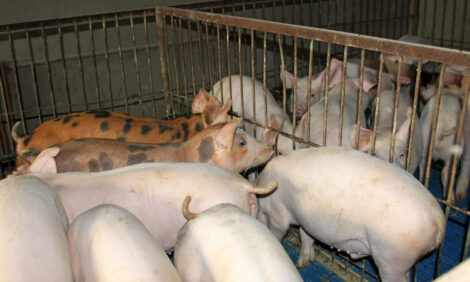



Revised Edition of 'Nutrient Requirements of Swine' Released
US - The National Academies of Science recently released the 11th Revised Edition of The Nutrient Requirements of Swine, also known as the Swine NRC.Hans Stein, professor of animal sciences at the University of Illinois, along with nine other swine nutritionists from universities and the Agricultural Research Service of the US Department of Agriculture, served on the committee that worked for 18 months to produce the new edition. The volume has been expanded to include 400 pages, 17 chapters, and detailed information on 122 feed ingredients.
"It's a great step forward with lots of new and updated information that will help elevate the industry, and the new publication provides the basis for formulating more accurate diets for pigs," said Mr Stein. "I encourage everyone who is interested in swine nutrition to read the new Swine NRC. I am confident that readers will find the information interesting and helpful."
Another committee member, Gretchen Hill of Michigan State University, said: "More comprehensive nutrient requirement models and the expanded feed composition tables are functional parts of the new addition. The volume separates carbohydrates and lipids into two chapters, making it easier for users to access important information relative to lipids in swine nutrition. Also, there is a new and very relevant chapter about co-products from the corn and soybean industries.“
Nathan Augspurger, research and technical scientist at JBS United, Sheridan, Ind., looks forward to reading the new Swine NRC. “The success of the swine industry depends on having access to the most timely and accurate information about swine nutrition, nutrient requirements, and feed ingredient compositions,“ he said. “I really look forward to studying the new publication and implementing concepts that will ultimately increase the efficiency and competitiveness of our customers.“
New content in the 11th Revised Edition includes:
- Updated energy and nutrient requirements for pigs in all phases of production,
- Information on new feed ingredients from the biofuels industry and other new ingredients, such as novel soybean products,
- New chapters on lipids, carbohydrates, potential feed contaminants, and on the digestibility of nutrients and energy,
- A new evaluation standard for phosphorus: standardized total tract digestibility, (STTD). Requirements for STTD phosphorus by all categories of pigs and STTD phosphorus content of feed ingredients,
- Information on the effects of feed processing (e.g., pelleting, extrusion, and reduced particle size),
- Strategies to increase nutrient retention and reduce nutrient excretion,
- Expanded feed composition tables,
- An updated computer model to estimate nutrient requirements for pigs,
- Identification of future research needs.
The work to produce the 11th Revised Edition of the Swine NRC was supported by financial contributions from the Food and Drug Administration; the Illinois Corn Marketing Board; the Institute for Feed, Education, and Research; the Minnesota Corn Growers Association; the National Pork Board; the Nebraska Corn Board; and internal funds from the National Research Council.
Mr Stein pointed out that while the 11th Revised Edition is a great advance, more research is needed to make the next edition even better. “We hope that the fact that the new publication has a chapter identifying the major gaps in research will encourage researchers to work in these areas,“ he said.
The Stein Monogastric Nutrition Lab has produced a podcast titled, "The New NRC," detailing the updates to the NRC. The podcast can be found at http://nutrition.ansci.illinois.edu/podcasts
or on YouTube at http://www.youtube.com/user/SteinNutritionLab.
To purchase a copy of the National Academies of Science 11th Revised Edition of The Nutrient Requirements of Swine click here.







